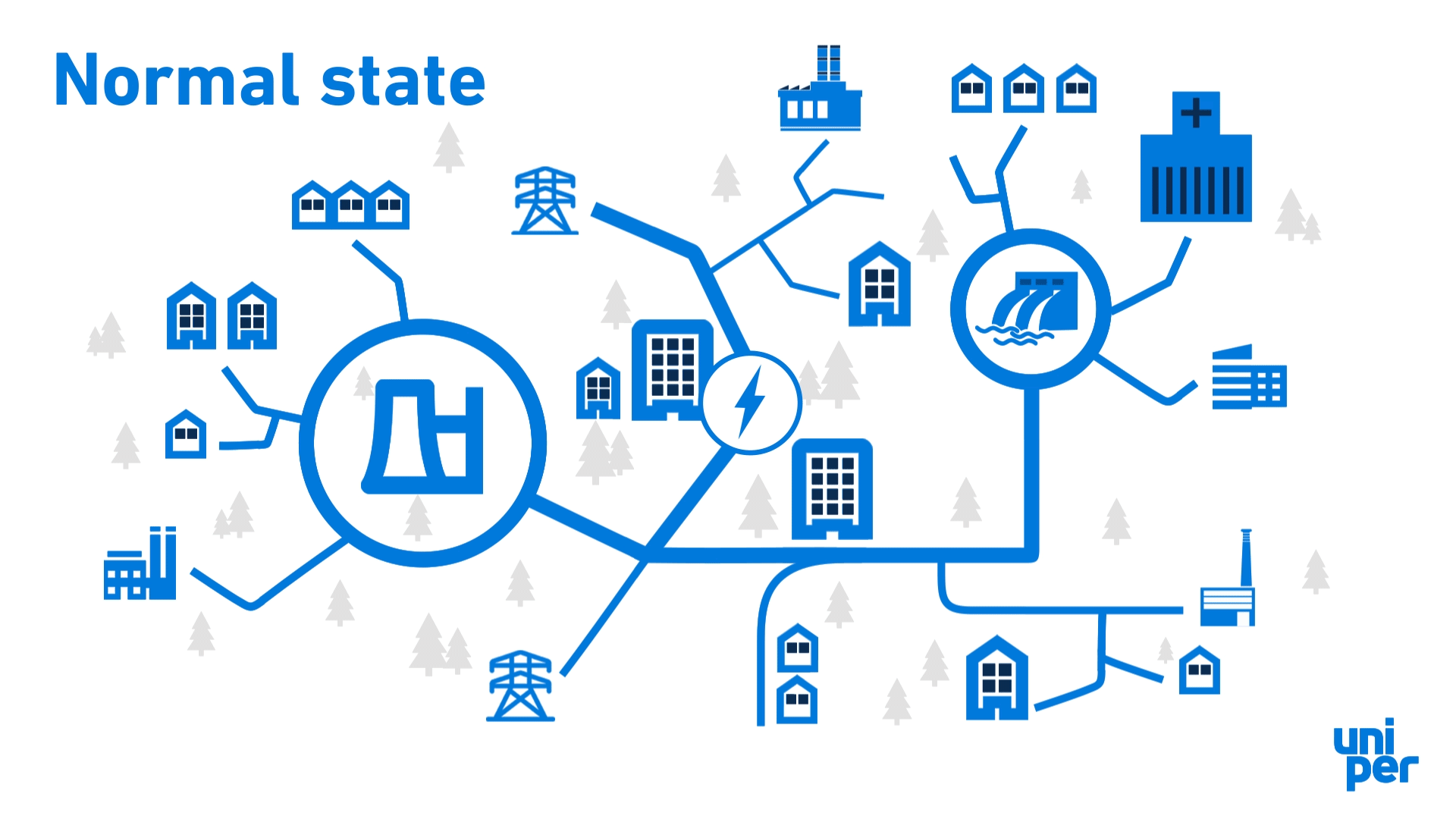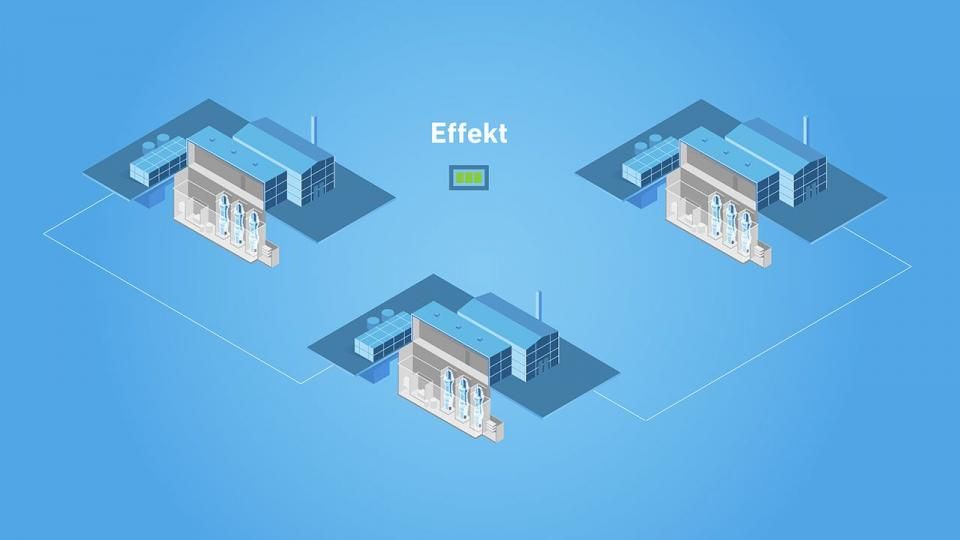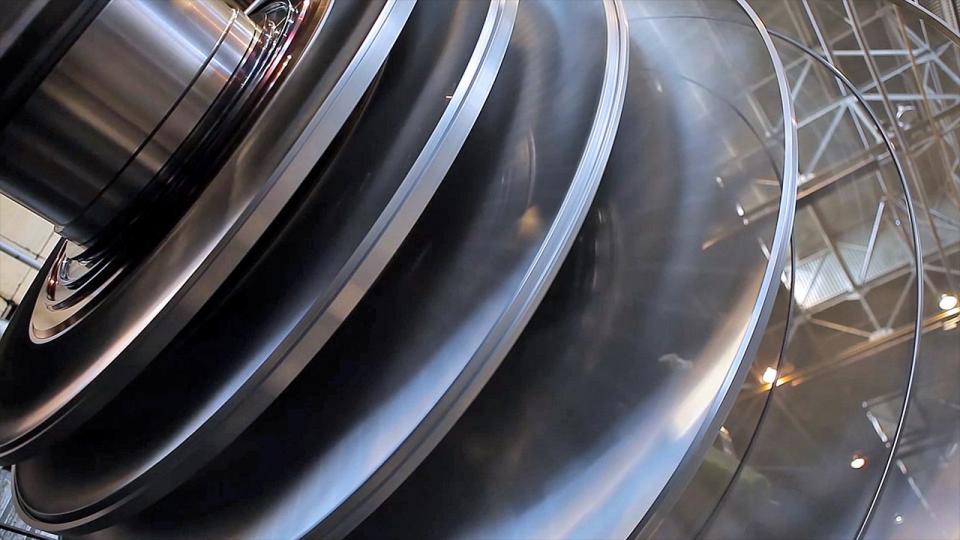Electricity grids and power plants in interaction
Our electricity system has been built and developed step by step, to meet our needs as society develops. Sweden is an elongated country with a lot of hydropower in the north, and most of the electricity use in the south. In order to transmit the electricity, both grid and power plants are needed along the way. Sweden's grid and production capacity, together with a high level of operational reliability, contribute to a good transmission capacity - and that we have access to electricity throughout the country.
Have you ever wondered why our nuclear power plants are located where they are? Watch our film and you will get the answer.
In that respect, there was also a thought behind the location of Sweden's nuclear power plant. Since electricity cannot be stored on any large scale, it must be produced at the same time as it is consumed. In order for the electricity to be stable, the generators at the large power plants spin in sync. You can say that they are linked with each other to be able to transmit power to the whole country. One less power plant simply means a weaker and less stable engine.
A power supply that delivers is based on five factors:
1. That there is a balance between electricity production and electricity consumption
2. That it is possible to maintain the voltage in each power plant
3. That it is possible to control power and energy flows
4. That power is constantly supplied to the right places in the electrical system
5. That the system can be quickly restored after a possible interruption
A power supply that delivers – today and in the future
Our common prosperity is largely based on the fact that we have successful companies that can compete in a global world market through smart solutions and products. Thanks to them, jobs and welfare are created.
Society and our industries need to change in order for Sweden to reach the climate goals and at the same time continue to be a rich and successful country. To succeed, innovations, new technology and industrial development are needed, but also fossil-free electricity – much more than what we produce today.
Sweden has good basic conditions through access to hydropower, nuclear and wind power. But we are about to outgrow the system. Large investments are therefore required for a balanced electricity system, where all fossil-free energy types can continue to contribute their respective strengths. When the electricity system is expanded, it is therefore important to have a strategic plan for the expansion so that the power plants are placed in the right places in the system. That is why power generation itself is only part of the solution, in the end what matters is that the electricity is where it is needed, when it is needed. A power supply that delivers – for real.
Electrical preparedness
When the power goes out at home, it’s usually enough to reset the circuit breaker. However, when an entire city or region experiences a power outage, the situation becomes much more complex. To understand what’s required in such cases, you need to understand the following key concepts: black start and island operation.

Black start
A black start refers to starting electricity production without access to external power supply. This is necessary when either the entire or parts of the grid are completely without power. To enable a black start, power plants must be capable of initiating operation independently of grid voltage. This can, for example, be achieved using batteries or gas turbines to provide the initial energy required to start other power plants. Hydropower plants are often suitable for black starts thanks to their rapid startup capability and good controllability.
During the first one to two hours after a major power outage, the grid is especially sensitive, and electricity consumption should ideally be reconnected cautiously and gradually. As a consumer, it’s advisable to turn off devices that were on when the power went out, particularly high-energy-consuming appliances like washing machines, dishwashers, heaters, and ovens.
Islanding
Islanding means isolating a part of the power grid to operate independently with local electricity production, disconnected from the main grid. This can be crucial for maintaining power supply in critical areas during widespread power outages. Several important conditions must be met for islanding to be feasible:
- Local electricity production: There must be sufficient local electricity production to meet the demand within the isolated area. Without local production, islanding is not possible.
- Frequency and voltage regulation: The local power generation must be able to regulate both frequency and voltage within the islanded area to ensure stable and secure power supply. This places high technical demands on the production facilities.
- Balancing production and consumption: It is vital to maintain a continuous balance between electricity generation and consumption within the islanded area. Imbalances can lead to frequency and voltage deviations, which may damage equipment and cause further outages.
System requirements for black start and islanding
For black start and islanding to function effectively, the electricity system must meet several requirements:
- Technical capability: Power plants must be able to start without external power supply and independently regulate frequency and voltage. This may require investments in equipment and technologies that support these functionalities.
- Grid infrastructure: The grid must be configured so that it can be divided into smaller sections capable of operating independently when needed. This involves equipping the grid with appropriate protection and control systems to manage such transitions.
- Prioritisation of electricity users: During islanding, it may be necessary to prioritise which users receive electricity, especially if local production is limited. Plans and protocols are required to ensure that critical services and infrastructure are maintained.
- Training and preparedness: Since practicing islanding under real conditions is challenging, simulations and training exercises are crucial to prepare personnel and systems for these situations. This helps identify potential issues and improve response strategies during actual events.
Find out more
Many innovative projects aimed at making nuclear power an important part of the future’s fossil-free energy system are becoming a reality. One such innovation is the Small Modular Reactor.
For Sweden to function and continue developing, we need secure and stable access to fossil-free electricity throughout the country.
Hydrogen is not an energy source in itself, but just like electricity it is an energy carrier. It can therefore not be determined to be renewable, fossil-free or fossil without knowledge about the production process.



